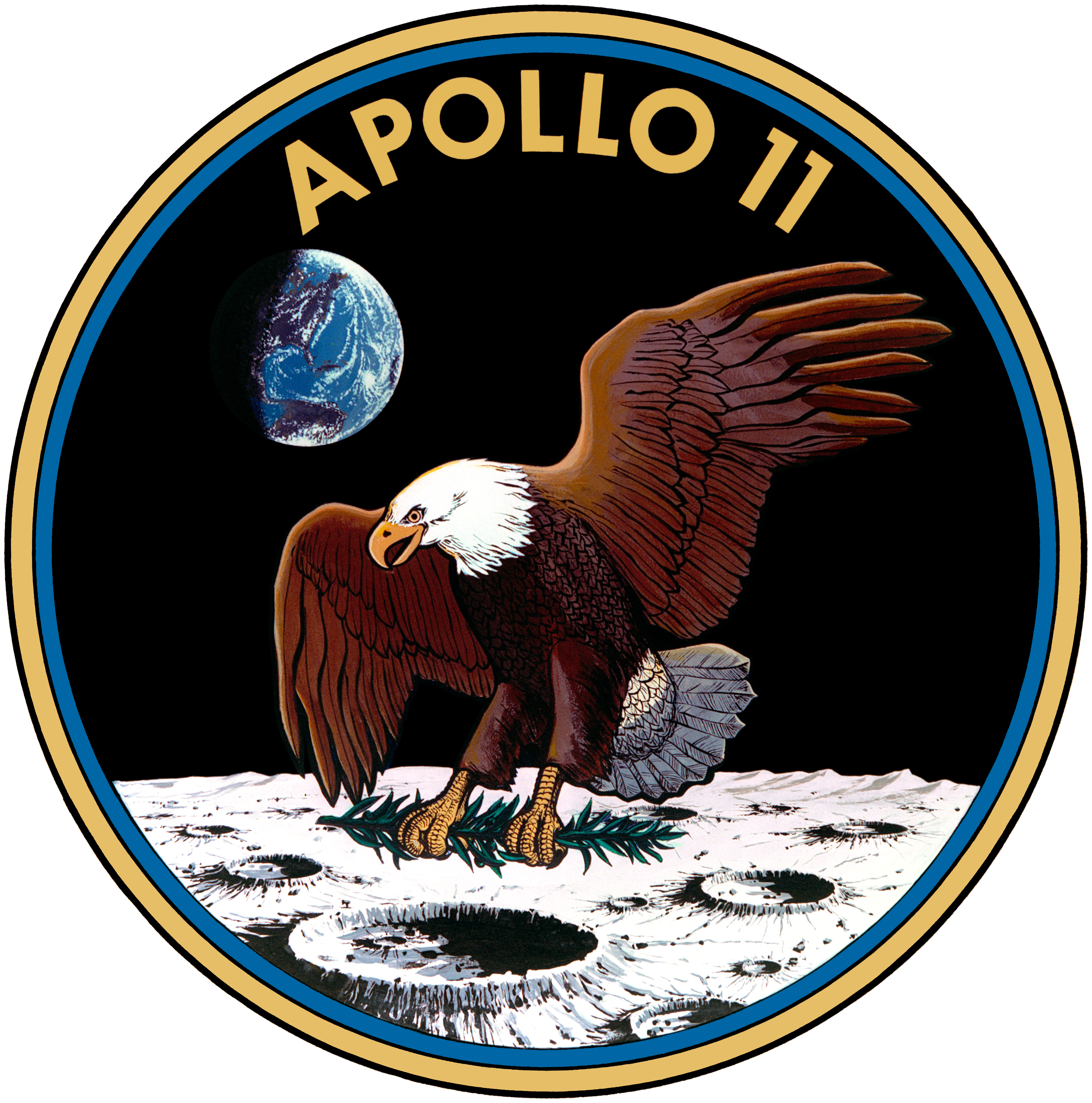
(Patch description)
The Apollo 11 Lunar Surface Journal. Geek heaven, containing the entire annotated transcript of the moon landing. Main page.
The public rightly celebrated reaching the goal Kennedy set a decade before:
One man's journey to see and be photographed with each Apollo manned capsule.

 |
| The boy, me, and Endeavour. Click here to go to Flicker photoset of our visit. |

 Apollo 6 was an UNMANNED test flight. It was launched in the morning on April 4, 1968. Later that evening, Martin Luther King, Jr. was murdered in Memphis.
Apollo 6 was an UNMANNED test flight. It was launched in the morning on April 4, 1968. Later that evening, Martin Luther King, Jr. was murdered in Memphis.The second Saturn V launch unfortunately did not meet with the success
of the first. As the Apollo 6 vehicle lifted off its pad on April 4,
1968 ("Early morning, April 4/shot rings out in the Memphis sky/Free at last, They took your life/They could not take your pride"), the ground
controllers had visions of a repeat performance of the Apollo 4 mission.
Their expectations, however, were not realized, since after only six
minutes into the flight, the Saturn V suffered the first of a number of
setbacks. Two of the five J-2 engines of the S-II stage prematurely shut
down. The crisis was not fatal, however, as the remaining three engines
continued to burn longer than programmed owing to the extra propellant
which the two shutdown engines had not consumed.
But there were still more problems ahead for the Apollo 6 mission. Since
the premature shutdown caused the S-II stage to be slower at burnout
than programmed, the guidance computer commanded the S-IVB stage to burn
about 30 seconds longer to make up the difference. This additional
burn-time depleted ten tons of additional S-IVB propellant, fuel that
was to have been used when the S-IVB was restarted after a two-orbit
coast. Aimed at a 115-mile circular orbit, the Apollo 6 payload was
finally placed into a 110- by 225-miles elliptical orbit. If the Apollo
6 had been carrying men for the lunar trip, the mission would probably
have been aborted. Since the purpose of this flight was to have the
Saturn V place a payload into orbit, the mission was in effect a success
even though it was in the wrong orbit.
One more difficulty, however, was to lie ahead in this hard-luck
mission. Following a two-orbit coast, the S-IVB stage failed to reignite
when commanded from the ground to do so. The purpose of this second
S-IVB burn was to propel the payload to a distance of 322,000 miles into
space. This maneuver would be quite similar to that which S-IVB would be
required to perform in the actual lunar mission.
To salvage what they could from the Apollo 6 mission, the NASA ground
controllers commanded the 21,500-pound-thrust service module engine to
drive the spacecraft to a 13,821-mile altitude, which was far short of
the planned 322,000-mile apogee. Later analysis of the flight revealed
that the early shutdown of the two J-2 engines was due to the improper
installation of two wires (newer information in Wikipedia indicates that "pogo" shaking of the craft on liftoff likely broke a propellant line, leading to an automatic shutdown, but the wire carrying the shutdown command was cross-wired from engine 2 to 3. When 3 shut down, further failsafe sensors caused the cross-wired engine 2 to shut down as well. The fact that these wires were cross-wired rather than simply miswired may have prevented a catastrophic failure of the spacecraft). A leak in one of the propellant lines probably was responsible for the failure of
the S-IVB to reignite in orbit. It was not the Saturn V that failed, but
the men who served her. -- Saturn V, The Moon Rocket (1970) by William G. Holder and Glenn Holder. Julian Messner, New York.
 In the Summer of 2008, my son and I traveled with the family to visit Huntsville, Alabama, and spend a weekend together at Space Camp. On a side trip afterwards, we discovered that the Apollo 6 capsule was only a few miles away from our hotel in downtown Atlanta, Georgia at the Fernbank Science Center. This Apollo capsule was the first one that I saw after I began my quest, but it's approximately the fifth in my life. In any event, because of its relative historical INsignificance, it is stored right out in the open, with nothing but a 4-foot-high wall of plexiglas to prevent you from reaching out and touching Apollo history.
In the Summer of 2008, my son and I traveled with the family to visit Huntsville, Alabama, and spend a weekend together at Space Camp. On a side trip afterwards, we discovered that the Apollo 6 capsule was only a few miles away from our hotel in downtown Atlanta, Georgia at the Fernbank Science Center. This Apollo capsule was the first one that I saw after I began my quest, but it's approximately the fifth in my life. In any event, because of its relative historical INsignificance, it is stored right out in the open, with nothing but a 4-foot-high wall of plexiglas to prevent you from reaching out and touching Apollo history.